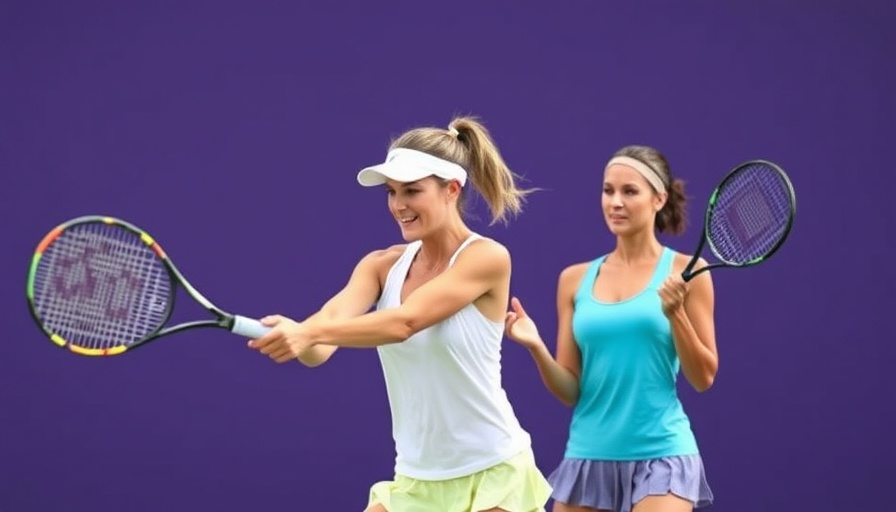
The Myth of Hip Rotation in Tennis
In the world of tennis instruction, a popular mantra echoes on courts: "Rotate your hips!" But what if this common advice is steering players in the wrong direction? This article dives into the intricacies of hip rotation during tennis strokes, debunking myths that could be hindering player performance.
In "Hip rotation debunked! Why it's wrong...", the discussion dives into the intricacies of shot control and mechanics, exploring key insights that sparked deeper analysis on our end.
Shifting the Center of Rotation
When players are taught to rotate their hips, they are often not aware of how this affects their shot. As described by tennis expert Julie in her recent training session, immediate hip rotation can shift the center of balance to a player’s foot, resulting in a chaotic shot. While it might feel powerful to unleash a big swing, it actually diminishes control, making accurate shots a challenge. Instead, focusing on upper body rotation harnesses power and precision more efficiently, allowing players to aim directly at their intended target.
Rearranging Your Power Dynamics
For many tennis players, hitting hard becomes synonymous with winning, yet there are smarter, more refined ways to harness energy. By emphasizing shoulder rotation rather than hip rotation, players can effectively direct their force towards the ball, maximizing control and aiming accuracy. As players step into the shot and push their hips forward, they maintain a centered rotation that enhances directionality—essential for strategically placing shots.
Beyond the Court: Understanding the Impact of Physicality
This principle extends beyond personal performance and into gameplay strategies. When talking about the mental side of tennis, players often need to consider how every aspect of their movement affects not only their shots but also their opponents' anticipation. Outwitting opponents isn't just about raw strength; it’s about mastering technique and psychological gamesmanship.
The Undeniable Link Between Technique and Control
As the video clearly illuminated, technique in tennis is about precision, not brute force. Failing to control one’s body can lead to inconsistencies. Think about the analogy: ask a painter to use broad strokes only, and they may miss the finer details. In tennis, keep the finer strokes—like proper body mechanics—squared away to create a more detailed and controlled execution of each shot. Control over the joystick—your body—will lead to a much more vibrant canvas on the court.
Practical Steps Toward Enhanced Tennis Skills
How can players implement these concepts into their practice? It begins with awareness. Developing a mindset where the tennis ball isn’t just a target but an opportunity to refine one’s approach will prove beneficial. Start by practicing drills that enhance upper body rotation without an emphasis on hip rotation. Use visual cues like polo shirts or tennis nets to guide posture and trajectory. The aim is to prioritize center of rotation stability and gain confidence.
Rethinking the Narrative: It’s Not All About Power
Ultimately, we need to reconsider common wisdom in training regimens. Emphasizing power can lead to reckless shots. Instead, players must embrace technique to unleash their full potential. With proper coaching and awareness, novice players and seasoned professionals alike can translate this knowledge into real results.
In "Hip rotation debunked! Why it's wrong...", the discussion dives into the intricacies of shot control and mechanics, exploring key insights that sparked deeper analysis on our end. By challenging traditional wisdom, we get a clearer picture of what it truly means to master the sport—and that mastery involves more than sheer force.
As you approach your next practice session or match, consider adjusting your focus toward upper body rotation and stability. For more transformative tips and insights, keep following and learning—your game will thank you.
 Add Row
Add Row  Add
Add 




Write A Comment